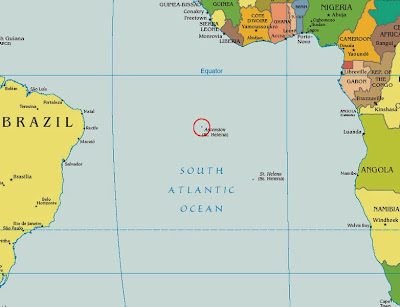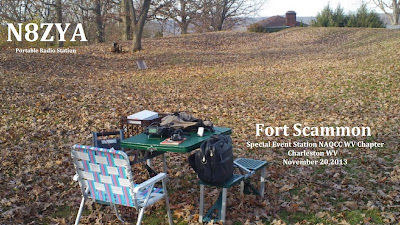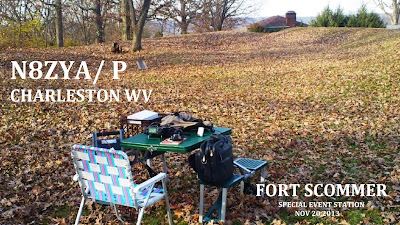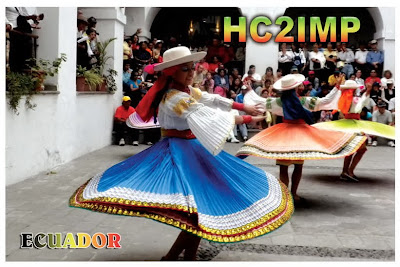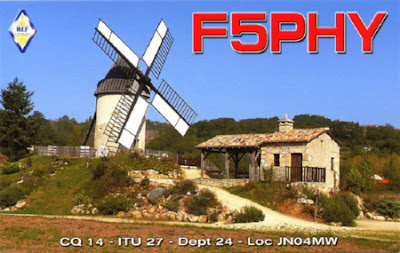Author Archive
 Ascension Island
Ascension Island
The temperature has taken a cold turn here in the valley today which meant that I would “tune around” again on the 10 meter band once more. It’s much too cold to be outside.
This contact with ZD8X on Ascension Island marks my second new DX country in just a few days.
Ascension Island is literally”in the middle of nowhere” between South America and Africa in the Atlantic Ocean. It’s primarily a communications hub for several countries and was a relay station for the BBC in it’s heyday. St Helena is in this general area and the place Napoleon spent his last days in exile.
It took me several attempts to work this station at 5,362 miles. There was quite a “pile up” and I was surprised to hear my call sign repeated back to me with the customary 599 report.
 An Island Near Venezuela
An Island Near Venezuela
Curacao, an island near Venezuela, is a new DX country in my log book. On November 19th, I easily worked PJ2/ N0YY and on November 22nd I easily worked PJ2/ W9NJY.
I’m amazed this station in South America hasn’t been worked more than I see on the DX Clusters. I spotted it for the second time yesterday and saw very little activity following up on the site.
As most of the islands in the Caribbean area, tourism is always a factor in their economy. In the area of “space tourism” Curacao is one of the tops in the field.
The Lynx Space Plane is an interesting concept. The pilot and “one” tourist can experience “sub orbital flight” where the stars shine steadily, the arc of the earth is below you, and you experience the feeling of weightlessness. I would imagine, also, a great place to use a handi-talkie on the VHF and the UHF bands. Expected to be viable in 2014, this “sub orbital spacecraft” will take you there for a fee of around $100,000.
Both these contacts were on the 10 meter band and pushing a 599+ signal into West Virginia.
 My Special Event Station
My Special Event Station
I worked seventeen stations with this “Special Event Station” of the West Virginia Chapter of the NAQCC club on Wednesday afternoon and sent an E-QSL Card to those who worked me. Fort Scammon isn’t well known to those living in my city, but during the Civil War, this artillery site was critical to controlling the river traffic on both the Kanawha and the Elk Rivers.
I created the above (sample) card with the simple “paint” program which comes with the Microsoft products on my windows computer. When I upload the card to my E-QSL account and enter the contact information of the stations I work, they’re displayed nicely along the bottom of the card.
The 19th and 25th Presidents of the United States (Rutherford B. Hayes and William McKinley) directed a dozen cannons from this high spot in Charleston where “flatboats” floated precious “salt” downstream to the Ohio River. Salt was a very valuable commodity in those days for the preservation of fresh meat. The production of high quality “salt” was one of the founding industries of the Kanawha Valley.
It took me a little over an hour to get set up and on the air but I felt this was one of only a few good days left before snow flurries begin to start flying this weekend. I used my PAR “end fed” Zepp antenna which was cut for 40-20-and 10 meters with my Icom 703 at about four watts to work stations in eleven different states.
I was able to work North Carolina, Virginia, Ohio, Pennsylvania, Indiana, Massachusetts, Kansas, New York, Illinois, Maine, and Canada.
The most distant station I worked this day was N1NUA (Joan) in Maine at 812 miles.
 Portable WV Chapter Event
Portable WV Chapter Event
I had a great time working the “Special Event Station” for the NAQCC WV Chapter of our national club on Wednesday afternoon. The event from the Fort Hill area of Charleston brought me 17 stations from the artillery position where both the 19th and 25th Presidents of the United States were stationed at one time during the Civil War.
It’s been called both Fort Scammon, Fort Scommer, and Fort White at different times, according to whomever was in control of the valley at the time. The Kanawha Valley was under the control of both Union and Confederate forces several times when salt production was the main business activity here. Salt was an important commodity for the preservation of meat during the war.
This high point overlooking the junction of the Kanawha and Elk Rivers was a good position for about a dozen cannons where it assured the control of both rivers.
I used the “paint” program to change the size of the picture and add my text to make this E-QSL card which I sent to the 17 stations I worked from noon till three in the afternoon from this site. It’s not well know in our town but the earthen structure is one of the highest points here and a decent radio spot for me to operate my QRP station for the event.
It wasn’t easy for me to set up here but it was a place close to home and the day was, I’m sure, one of the few before the snow flurries start to fly this weekend.
I worked stations in North Carolina, Virginia, Ohio, Pennsylvania, Indiana, Massachusetts, Kansas, New York, Illinois, Maine, and Canada.
There were times when the weaker stations realized I was intentionally listening on both sides of the designated frequencies of both 40 and 20 meters. I feel like a “rock star” when doing these events and am forced to draw out the weaker signals with this procedure. I can only imagine what a “big” pile up must be like with rare DX stations. I enjoyed being on the “other side of the coin” as I worked these stations with 4 watts of power and an “end” fed Zepp antenna.
 My Second Contact to Alaska
My Second Contact to Alaska
It’s unusual for me to work a station in Alaska, so I’ve been very happy to make a contact with KL7QZ in Anchorage, on the 12 meter band and at a distance of 3,242 miles @ 3 watts, makes this contact even better…..
I’ve only worked a station in Alaska twice in all the years I’ve been on the radio and I had a great copy (599) on him. He was hearing me at the 339 level but we completed a QSO.
In Alaska they were experiencing a real “heat wave” with the temp being -3 (C) and going down to -10 (C) tonight.
Propagation was terrible according to all the usual forecasts, but I still worked KW7D in New Mexico and I also found HC2IMP in Ecuador (again) on the 10 meter band.
I was pleasantly surprised to hear a “nice crisp chirp” from him this time. If you remember a post from our WV Chapter outing from Hurricane WV, on the first of November, I was hearing a real “growler” at that time.
I’ve not worked a lot of long distance stations the last few months because I’m focusing my energy on the new club; so it was enjoyable to work these unusual stations although they’re not very distant.
I’ve actually enjoyed the QRP contacts even more than in the past.
They’re much more personal than the “handshakes” for DX contacts. Yesterday, after completing a QSO with a QRP station on 30 meters, I was contacted by WV4TN in Knoxville TN. Wayne had many friends living here in Charleston, so knew exactly where I lived, and asked me to say hello to Dave Ellis (WA8WV).
Dave is the guy with a “very nice beam” who offered it’s use to me for some of my QRP contacts when we met at the Parkersburg Hamfest. I was happy to talk to Dave by phone and say hello to him from his friend in Knoxville.
I’m working a lot more stations this year, since 2010, when I first started keeping track of all my contacts.
To date, I have 2,349 QSO’s in the log book. My numbers are also up from “last year” from 472 in the year 2012— to 656 in this year of 2013. (with still 2 months to go before the end of the year).
Not surprisingly, I’ve worked 413 NAQCC members now out of a total of 462 QRP QSO’s.
I might not be working as many DX stations as previously, but with 667 in the log book and 90 countries, I’m OK with those numbers. I’m liking those nice QRP QSO’s very much and they’re equal to all the handshakes I’ve made the last few years.
 Breakfast, Bacon and Eggs, and Radio
Breakfast, Bacon and Eggs, and Radio
 A Good Start in November
A Good Start in November
Our event was scheduled to begin at noon. I arrived early, and was pleasantly surprised to see Jim (NX8Z) “itching to go” with an assortment of radio and computer gear. His Buddipole antenna was in place at the rear of his truck.
I like this multi-band antenna for the West Virginia Chapter events because it’s cut for 40-20- and 10 meters. Although not optimal for 40 meters, it’s very good on 20 and 10 meters. The antenna was up only about 30 feet.
I deliberately spent most of my time today working NAQCC stations on the 40 and 20 meter bands, according to the announcement in the mass mailing from Paul (N8XMS) but couldn’t help but take a “last parting 10 meter shot” at a station in South America.

